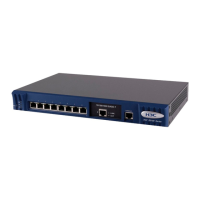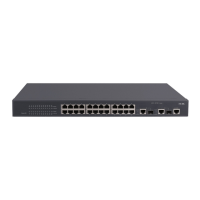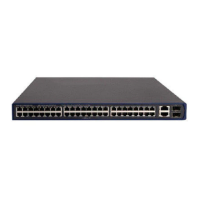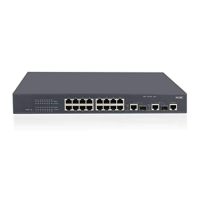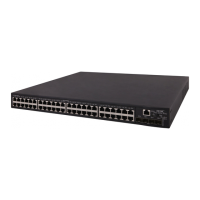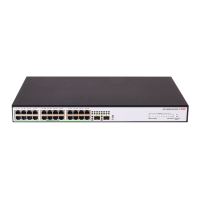1-41
To do... Use the command... Remarks
Return to system view
quit
—
Enable the digest snooping
feature globally
stp config-digest-snooping
Required
The digest snooping feature is
disabled globally by default.
Display the current
configuration
display current-configuration
Available in any view
z When the digest snooping feature is enabled on a port, the port state turns to the discarding state.
That is, the port will not send BPDUs. The port is not involved in the STP calculation until it receives
BPDUs from the peer port.
z The digest snooping feature is needed only when your switch is connected to another
manufacturer’s switches adopting proprietary spanning tree protocols.
z To enable the digest snooping feature successfully, you must first enable it on all the ports of your
switch that are connected to another manufacturer’s switches adopting proprietary spanning tree
protocols and then enable it globally.
z To enable the digest snooping feature, the interconnected switches and another manufacturer’s
switch adopting proprietary spanning tree protocols must be configured with exactly the same MST
region-related configurations (including region name, revision level, and VLAN-to-instance
mapping).
z The digest snooping feature must be enabled on all the switch ports that connect to another
manufacturer’s switches adopting proprietary spanning tree protocols in the same MST region.
z When the digest snooping feature is enabled globally, the VLAN-to-instance mapping table cannot
be modified.
z The digest snooping feature is not applicable to boundary ports in an MST region.
z The digest snooping feature is not applicable to edge ports in an MST region.
Configuring Rapid Transition
Introduction
Designated ports of RSTP-enabled or MSTP-enabled switches use the following two types of packets to
implement rapid transition:
z Proposal packets: Packets sent by designated ports to request rapid transition
z Agreement packets: Packets used to acknowledge rapid transition requests
Both RSTP and MSTP specify that the upstream switch can perform rapid transition operation on the
designated port only when the port receives an agreement packet from the downstream switch. The
difference between RSTP and MSTP are:
z For MSTP, the upstream switch sends agreement packets to the downstream switch; and the
downstream switch sends agreement packets to the upstream switch only after it receives
agreement packets from the upstream switch.
z For RSTP, the upstream switch does not send agreement packets to the downstream switch.
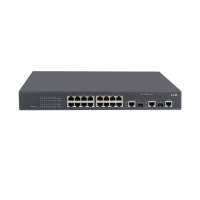
